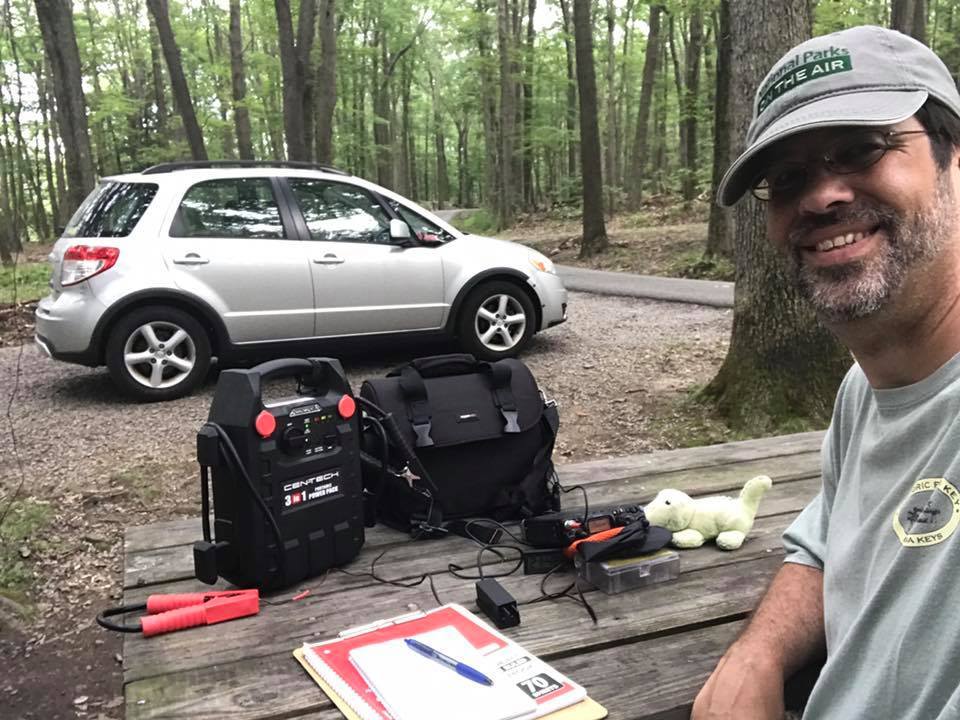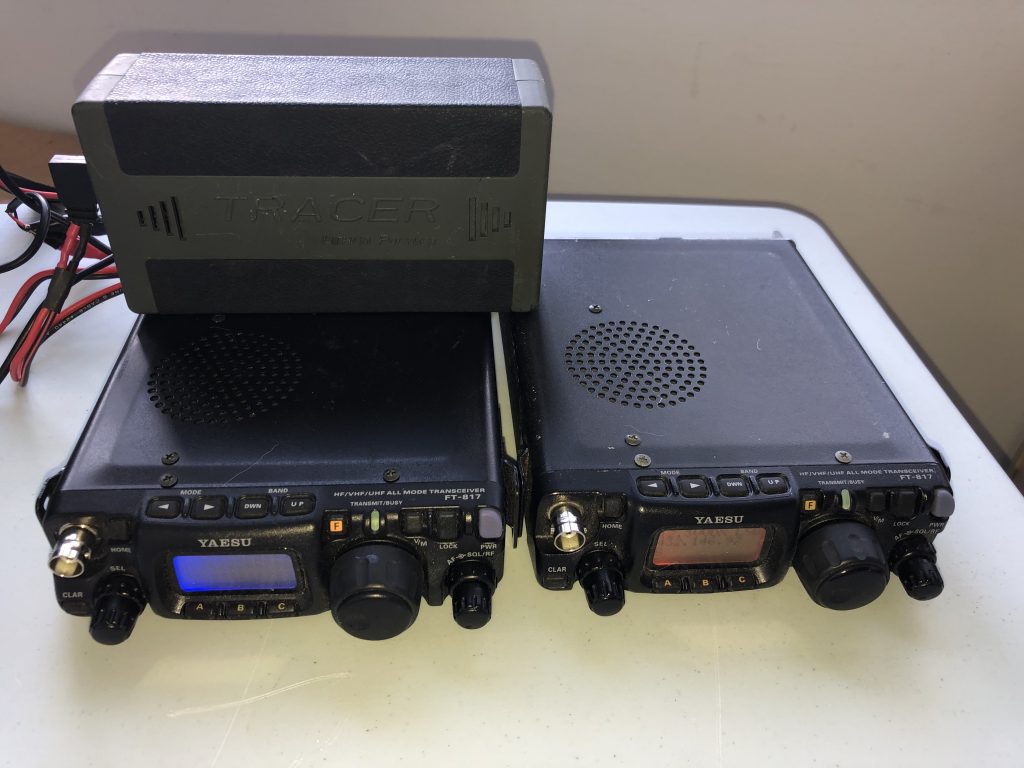No matter where you operate, you’re going to need electricity. Some portable scenarios will allow you to use commercial power, of course, but for most situations, this means a battery. There are several types to choose from, and each has pros and cons associated with them. Your operating style and your budget are the two main items that will dictate what kind of battery you choose; somebody who does a lot of car camping will not have the same needs as a backpack QRPer, who has more concerns about station weight.
If you have access to commercial AC mains on your portable operation, you can simply bring your home station’s power supply with you. However, there are alternatives to unplugging your home station’s supply. Power supplies come in two main types: switching and linear. Switching power supplies are small, lightweight and perfect for portable applications, but the cooling fans in some models can be the source of noise that will interfere with reception. Linear power supplies have a large transformer that won’t generate RF interference, but they weigh a lot. DX Engineering has a wide selection of power supplies to cover your needs and budget.
How much “juice” do I need?
Determining your power consumption is a critical aspect of portable operating. It will help you determine the size of the battery you need to bring.
The number to focus on for power consumption is Amp-hours (Ah), a standard measurement determining the lifespan of a battery’s charge.
You’ll also need to know the current consumption of your radio, both in transmit and receive. These numbers will be in your radio’s manual. Most QRP radios average around 2 amps of current consumption while transmitting at five watts.100 watt radios like the common all-band portable HF radios average around 20 amps. Again, these are approximations. Be sure to consult your manual to get the exact number for your rig.
The operating mode you use will have an impact on your current consumption. There’s a measurement called the duty cycle, which measures how often your transmitter is on or off. While it may initially seem that you are either transmitting or you’re not, there are varying degrees of how much current a transmitted signal will pull from your power source. Digital modes, like PSK or FT8, along with FM, are “100% duty cycle ” modes; that is, they are pulling the maximum amount of amps from your power source when the transmitter is engaged.
CW operating is about a 50% duty cycle mode. There are pauses between letters and words when transmitting a tone, so the full cycle isn’t used. However, when it’s on, it’s on and consuming as much amperage as possible during actual transmission times.
Single sideband (SSB) operating is less of a duty cycle. There are natural fluctuations in your speech pattern which create pauses, louder and quieter passages due to your delivery style, and other factors. Generally speaking, your duty cycle will be much lower on SSB than on digital modes or CW.
Let’s say you have a 12V battery with a 100 amp-hour rating. That battery will provide 100 hours of operating at 1 ampere of current consumption, or 1 hour of operating at 100Ah. Note that a battery near the end of full charge will exhibit a large voltage drop, so for best results the Ah rating should be de-rated by 1/3 to 1/4. Some radios don’t function well or automatically reduce transmitted output power if their power source drops below 11 volts. Check your owner’s manual to see what the acceptable voltage range is for your radio.
For larger operations when you don’t have to carry everything in a backpack, a deep-cycle marine battery will work wonderfully. They offer several hundred amp-hours of power and are trouble-free; however, they are large and VERY heavy. Charging them becomes a concern if you will be out in the field for a few days. Solar panels can help keep your battery topped off while you operate, if the panels are large enough. For shorter duration operations, or for the weight-conscious weekender, a smaller car or motorcycle battery will provide a steady power source for several hours of operation at higher power levels.

Another good option for the car-camper is an emergency car starter. These are available at most big-box stores in the automotive section. They come in an easy-to-carry case and can provide an afternoon’s power if transmitting with 40-50 watts. Many come with other nice features, such as USB ports for charging your smart phone or other devices, and a light for evening operations.
Field Operating Power Sources
There are a few different types of 12V DC batteries most frequently used by portable operators:
Sealed Lead Acid (SLA): SLA’s have a lot going for them. They’re inexpensive, reliable, rugged, and easily available. Common sizes for portable operations range from 4 to 10 Ah. Much larger capacities are available as well. You can either get a single 12V SLA or use two 6V SLAs in series. A new 7Ah SLA goes for around $25. Smart chargers for SLAs begin at around $25 as well.
Many portable operators I know get slightly used SLAs for free. 7Ah SLAs are commonly found in uninterruptible power supplies used in the IT industry. These provide emergency power for various computers and servers in case of a power failure. Many companies rotate these batteries out after a couple years to ensure peak performance in case of emergency. The batteries rotated out of service are known as “pulls.” Pulls will work well under most circumstances, and you may be able to get these batteries for free if you ask your company’s IT person nicely, since disposing of them is not exactly a trivial process. Verify that any SLA works well before trusting it.
The biggest drawback to SLAs is their weight. A 7Ah SLA weighs around six pounds. If you’re car camping, that’s not so bad, but for a backpacker, that’s the same as 3/4 of a gallon of water. Many a backpack QRP aficionado’s entire station weighs less than that. When you have to carry everything you need up the side of a mountain, every ounce becomes a serious concern. Six pounds is a LOT of weight. If it doesn’t sound like a big deal, try carrying a 7Ah SLA with you during the course of your day; you might change your mind after a while.
Lightweight Battery Options
Battery technology has improved dramatically over the last ten years, and it’s only going to get better. Two major lightweight options exist: Lithium-ion and lithium polymer batteries. Both types can provide power for extended operating periods and come in a variety of amp-hour options. The downside: These batteries can be expensive, and their charging requirements are finicky compared to sealed lead acid batteries. However, they weigh almost nothing.

There are many manufacturers of these lightweight batteries, as well as plans online for making your own DIY battery pack. I have been using a 10 amp-hour lithium polymer battery by Tracer Power for both my backpack QRP rig and my portable satellite station for several years. It is small, weighs less than two pounds, and comes in a well-built case. I’ve never had a problem with it. It provides more than enough power for an afternoon of QRP work from a summit or park and will keep my two Yaesu 817 transceivers on the air for multiple satellite passes before needing to be recharged. Many QRP operators are happy with the Bioenno line of batteries, as well.
Whether activating summits or parks for an on-air award or just bringing a radio with you on vacation or a business trip, evaluating your power options can help you maximize your time in the field and help keep the amount of gear you bring to a minimum. How much weight you want to carry, how you will carry it, and your budget will all be factors in selecting your power source. With a little research, you can find the right balance that suits you and lets you enjoy more time operating portable.

